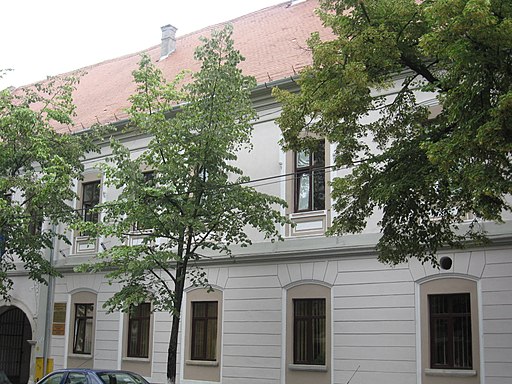Karacsay Houses, Kalazantinum

university / college
History
The plot of land of the houses destroyed by fire in 1798 was bought by two noble families: baron Bánffy László and (perhaps) the Kornis family. They built the two small palaces that still stand today. The long building was at least partially completed in 1816. Until 1822, when it was moved to the college, one of its rooms housed the archives of the Reformed General Consistory. Shortly afterwards, the two houses became the property of the Count Karacsay family. At the end of the 19th century, the Piarists bought the houses and decided to build them together. Reményik Károly, the expert who led the construction, preserved the individuality of the two buildings, beyond the inevitable alterations. In the autumn of 1894, the Kalazantinum was opened in the building in Kolozsvár. The Kalazantinum was the institute of theology and teacher training, as well as the home for the novices of the Hungarian Piarist Order. In 1916, the Kalazantinum was merged with the new institute of the Piarist Order in Budapest, and the institution in Kolozsvár ceased to exist. The former building of the Kalazantinum was bought by the town in 1918, and various offices were housed there. After the annexation of Transylvania to Romania, in 1922, the theological institute of the Order was reopened and provided for the education of its students until 1940. It was housed in the former dormitory of the nobility and the theologians obtained their teaching qualifications at the Romanian university.
